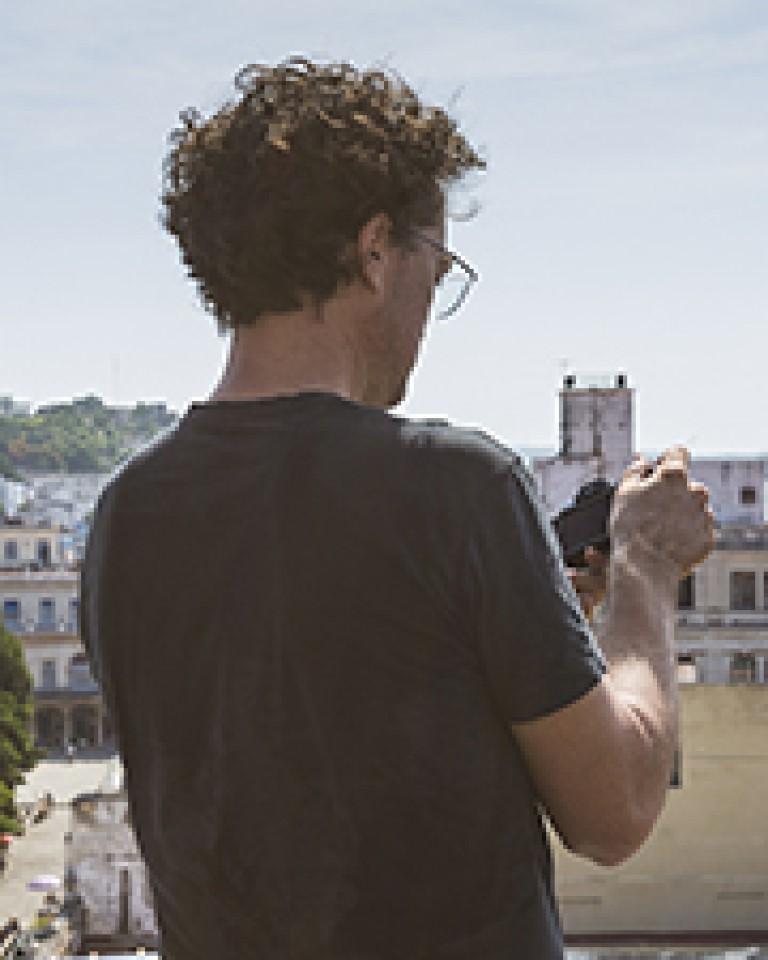Tim Hossler

MENTOR SPOTLIGHT | AUGUST 2016
Department: Department of Design, School of Architecture, Design & Planning
Describe your work in a few sentences that we can all understand: I work with cultural institutions, photographers, artists, and other researchers to create narrative work. All of my work/research is collaborative. I like working with others.
Q: How did you first get interested in doing research?
A: When I was twelve I told my parents that I wanted to be an architect. My parents’ response was to center all of our family vacations around Frank Lloyd Wright buildings. Their belief was that to learn about architecture I needed to experience it first hand. Since an early age I’ve wanted to explore and make things. Early in my professional career I worked for the photographer Annie Leibovitz in New York City. I give a lecture in my Design History class titled ‘Standing Next to Annie’. In that lecture I explain how important research is in her process for making portraits. Before for she starts a shoot she already knows everything she possibly can about her subject. History is also an important reference point for her (and me too). I’ve been blessed with having worked with some great people whom I learned from by just standing near by.
Q: What do students in your discipline learn by doing research that they wouldn’t learn by just taking classes?
A: : I’m a strong believer in self-directed learning. I love seeing students develop passions for their work. In design everyone is following a personal vision. Researching, exploring, experimenting, and working hard develops those visions. As design teachers we can show the process but each student develops their own direction.
Q: What do you find to be the most exciting part of doing research or creative work? What makes this line of work meaningful and interesting to you?
A: I can get very focused on whatever project I’m working on. Obsessed might be the more accurate description. Currently I’m working on a project about Havana, Cuba. I’ve read everything I possibly can on the city, followed weird and strange tangents and have visited Cuba multiple times, taking thousands of photographs. I’m at a point in the process where I’m taking all of that research and making it into a visual book. It is the book where I tell the story of what I have found. I love getting excited about a subject and becoming immersed in it. I feel very satisfied when the final object is made.
Q: What advice do you have for undergraduates interested in doing research in your field?
A: Fall in love with your subject. Research takes a lot of time and energy; it is very important to enjoy what you are doing. Believe in what you are doing.
Q: For many students, doing research or a larger creative project is the first time they have done work that routinely involves setbacks and the need to troubleshoot problems. Can you tell us about a time that your research didn’t go as expected? Or about any tricks or habits that you’ve developed to help you stay resilient in the face of obstacles?
A: I’m a big baseball fan. When I was young I read Charlie Lau’s book "The Art of Hitting .300”. (Charlie Lau was George Brett’s hitting coach). In the book Lau explains that being a good hitter is mostly about failing. Getting a hit 3 out of 10 times makes you a great baseball player. I think design is the same way. You need to keep exploring, you need to keep trying new things. The design process is about making something, taking it apart, redoing it, and repeating the sequence. You must hold on to your ideas loosely. All of my projects are filled with obstacles. But most of the time those obstacles make the work more focused and better developed.
Q: How do you spend your time outside of work?
A: I spend time with my wife, two daughters, and our new dog. I enjoy traveling, reading, watching movies, and running.